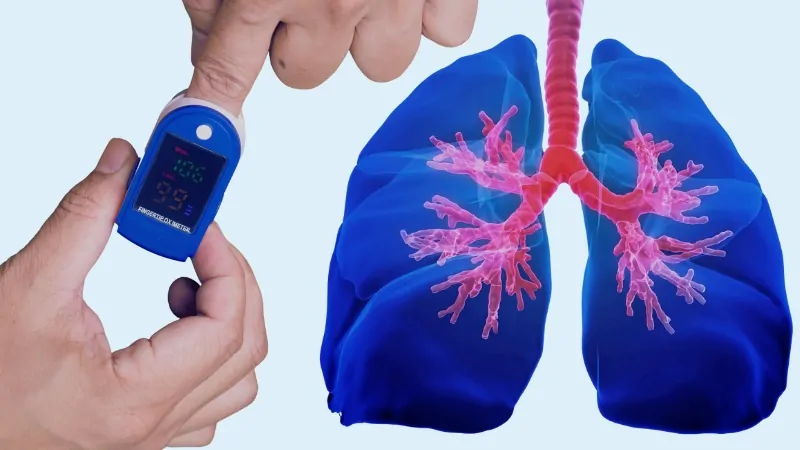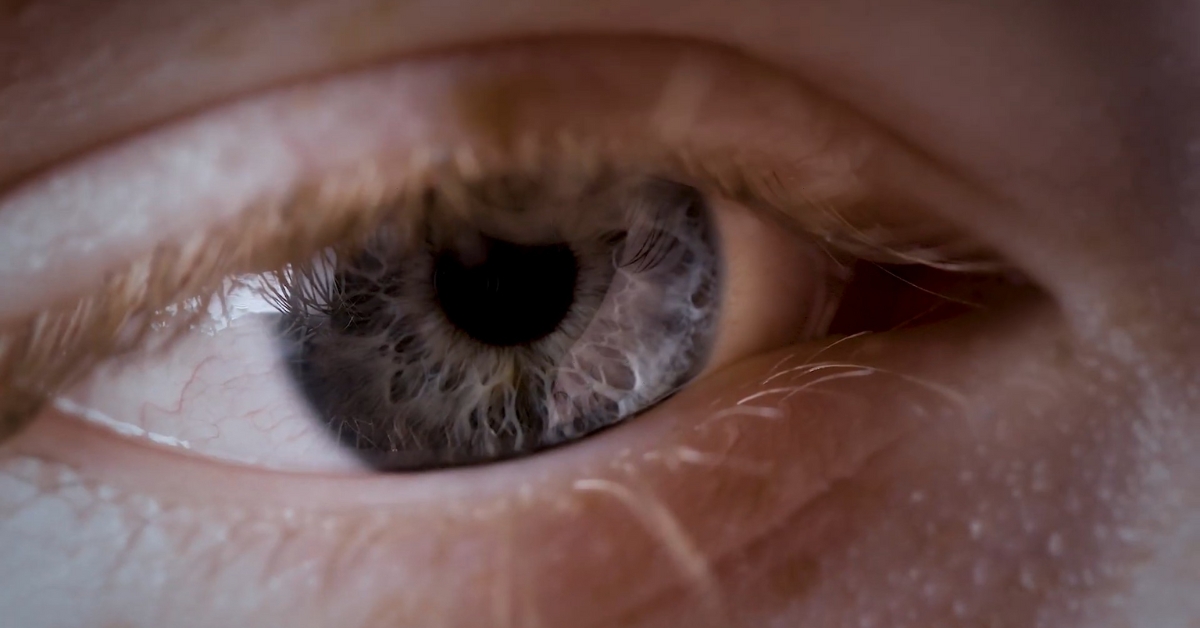Breathing is something we all do without thinking, but did you know that sometimes your body needs a little help to get the oxygen levels it craves?
Blood oxygen saturation, or SpO2, is a measure of how much oxygen your blood is carrying. It is usually expressed as a percentage.
A SpO2 level of 95% to 100% is considered normal according to NCBI.
This means that your blood is carrying almost as much oxygen as it can.
People with lung conditions or those living at high altitudes may have lower SpO2 levels.
In such cases, monitoring and addressing oxygen levels are important to avoid complications.
Here’s how to immediately boost your oxygen levels.
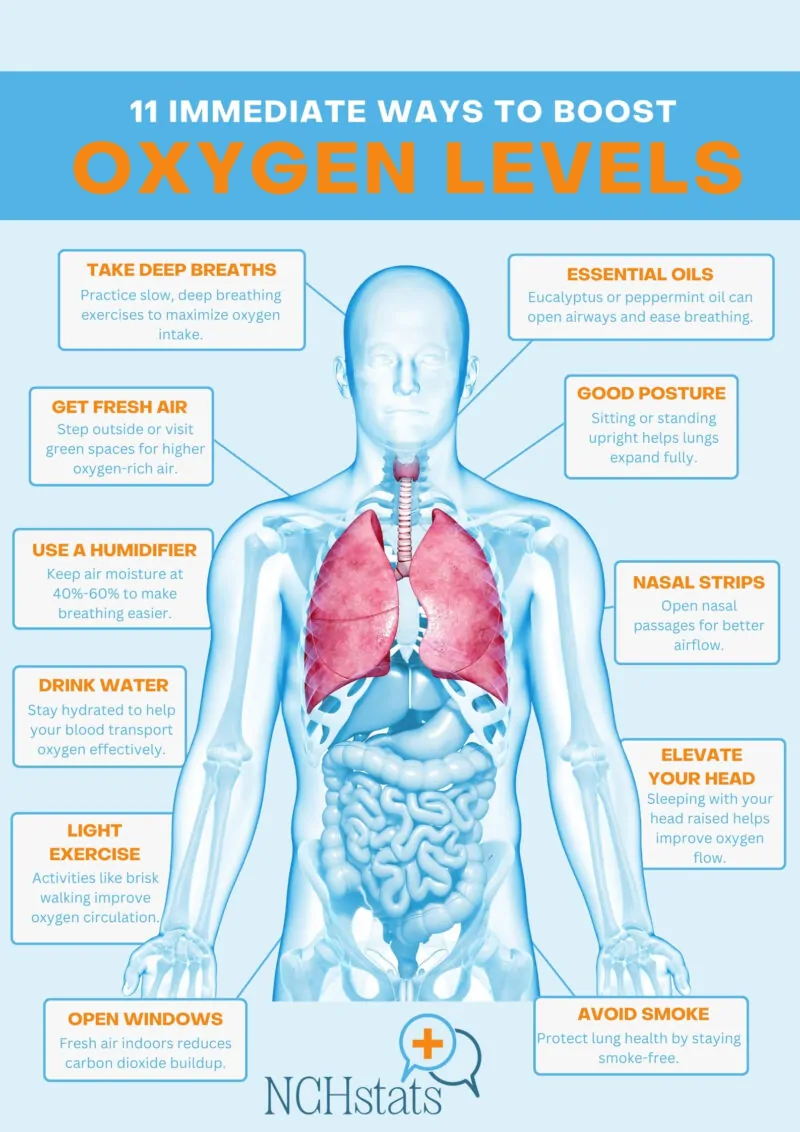
Table of Contents
Toggle1. Take Deep Breaths

Practice deep breathing exercises by inhaling slowly and deeply through your nose, filling your lungs. Imagine your lungs expanding like a balloon, allowing them to take in as much air as possible.
Hold your breath for a few seconds, letting the oxygen saturate your blood, then exhale slowly through your mouth. This helps maximize the oxygen you intake and can also help calm your heart and nervous system, reducing stress and anxiety.
“Deep breathing exercises can help increase your oxygen levels by helping you to breathe more deeply and efficiently,” says Paul Daidone, MD, a double board-certified internal medicine and addiction medicine physician.
2. Get Fresh Air
Fresh air is essential for our health and well-being. It helps improve oxygen levels, boosts energy, and enhances concentration. In today’s polluted world, finding clean, fresh air is becoming increasingly rare. Breathing in polluted air can lead to various health problems,…
— 🌹Ellems🌹 (@ellems00) November 8, 2024
Fresh air, especially in natural surroundings, has higher oxygen levels compared to indoor environments, which can be more stagnant and lower in oxygen.
Green spaces with trees and plants are particularly beneficial because plants release oxygen as they photosynthesize, enriching the air with this vital gas.
According to NCBI study even a few minutes outside can make a difference, refreshing your body and mind. Breathing in fresh air can also clear your lungs of pollutants and toxins that accumulate indoors, contributing to better overall respiratory health.
3. Use a Humidifier
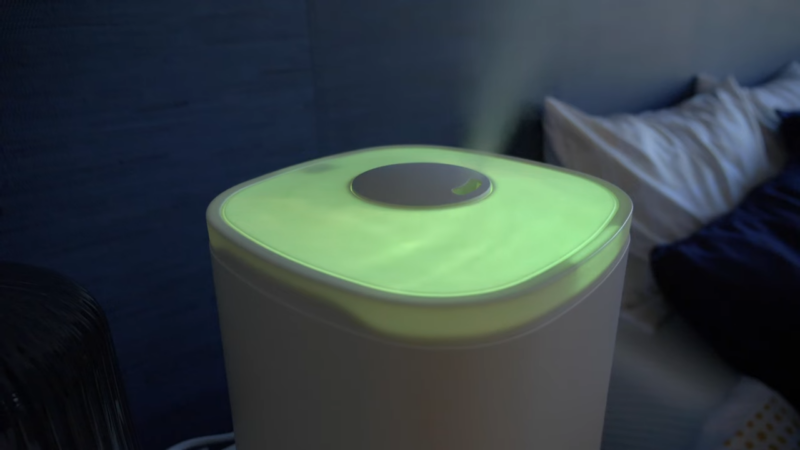
If you’re indoors, turn on a humidifier. Moist air is easier for your lungs to absorb, improving oxygen intake and making breathing more comfortable, especially if the air is dry.
This is particularly helpful in dry environments, where low humidity can cause respiratory discomfort and reduce the efficiency of oxygen absorption.
4. Drink Water

Proper hydration helps the blood transport oxygen more efficiently throughout your body, ensuring that your tissues and organs receive the oxygen they need to function optimally.
When you are dehydrated, your blood can become thicker, making it harder for your heart to pump it effectively and reducing oxygen delivery to your cells according to NCBI.
Drinking water also helps thin mucus in the lungs, making it easier to clear, which can improve your overall lung function. Consistent hydration supports your body’s natural detoxification processes, aiding in the removal of waste products and helping your cells operate at their best.
Dissolved Oxygen in Water
Dissolved oxygen is most accurately measured using a calibrated dissolved oxygen sensor, which provides readings in milligrams per liter (mg/L) or as a percentage (%DO), as noted by the Government of Northwest Territories.
Dissolved Oxygen Levels in Water
Water Condition
Dissolved Oxygen (mg/L)
Dissolved Oxygen (%DO)
Healthy Water
6.5 – 8
80 – 120
Cool, Clean Water
Higher
Higher
Warm, Polluted Water
Lower
Lower
5. Perform Light Exercise
View this post on Instagram
A post shared by Emily Cuevas • Certified Nutrition Health Coach (@offyourplatewellness)
Engage in a quick session of light aerobic exercise, like brisk walking or cycling.
This increases your heart rate and breathing, which helps you take in more oxygen and distribute it throughout your body.
Harvard Health notes that exercise stimulates the production of endorphins, which can improve your mood and reduce feelings of fatigue, making you feel more energized.
6. Open Your Windows

If going outside isn’t an option, open windows to improve air circulation.
This can reduce carbon dioxide levels indoors, which can accumulate in poorly ventilated spaces, and increase oxygen availability.
Allowing fresh air to flow into your home or workspace helps dilute indoor pollutants, allergens, and toxins, creating a healthier environment.
Regularly airing out your living space can also prevent the buildup of moisture, which can lead to mold growth and negatively impact air quality.
Even if the weather is chilly, cracking open a window for just a few minutes can refresh the indoor air and boost your oxygen intake.
7. Inhale Essential Oils
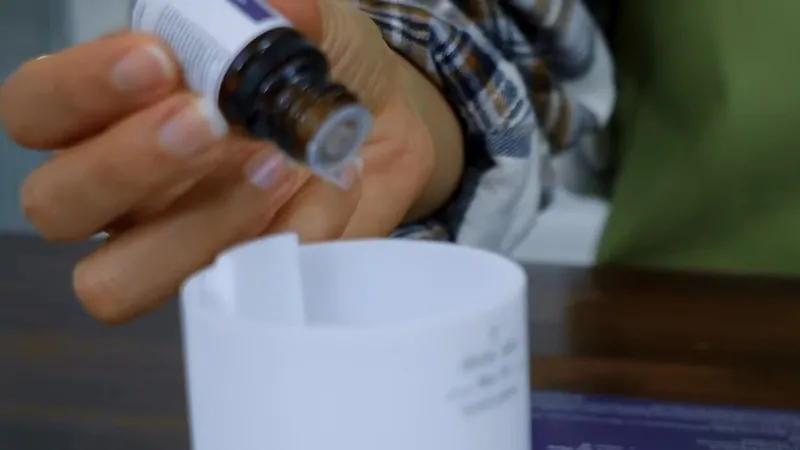
Use essential oils like eucalyptus or peppermint. Inhale their aroma directly from the bottle or through a diffuser to open up your airways, which can improve oxygen flow and ease breathing.
According to the experts at Wholesale Botanics, these essential oils are known for their respiratory benefits; eucalyptus, for example, contains compounds that can help clear mucus from your airways, making it easier to breathe.
Peppermint oil, on the other hand, contains menthol, which has a cooling effect and can help relax the muscles of the respiratory tract.
8. Practice Good Posture
Sitting or standing up straight, with your shoulders back, opens up your lungs, allowing for deeper breaths and more oxygen intake, which can improve your overall energy levels and concentration.
Poor posture, such as slouching or hunching over, compresses your lungs and restricts their ability to expand fully, reducing the amount of air you can inhale.
Practicing good posture regularly can also boost your confidence and mental clarity, as proper breathing is closely linked to cognitive function and mood.
9. Use Nasal Strips
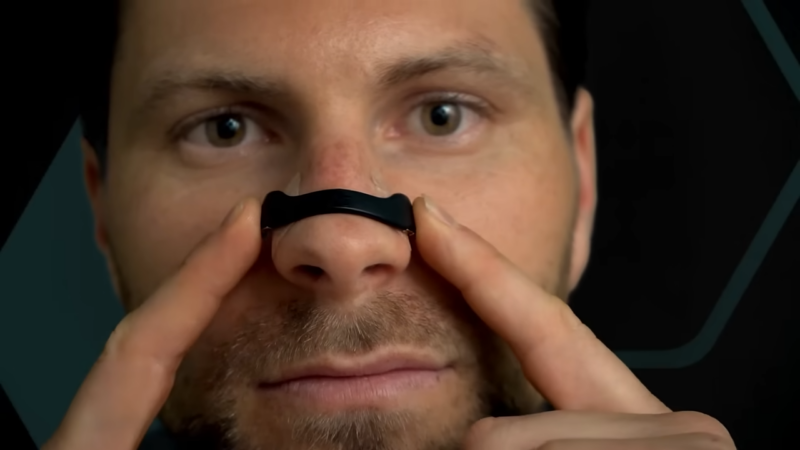
Apply nasal strips to your nose. These strips work by gently lifting the sides of your nose, opening up your nasal passages, and making it easier to breathe deeply.
Nasal strips are particularly helpful for people with allergies, colds, or structural nasal issues, such as a deviated septum, that make breathing difficult.
10. Elevate Your Head

If you’re lying down, prop yourself up with pillows to elevate your head and upper body.
This can help open up your airways and make it easier for you to breathe deeply, improving your oxygen intake during sleep or rest.
Elevating your head can be particularly beneficial if you suffer from conditions like sleep apnea, acid reflux, or congestion, which can obstruct breathing when lying flat.
This simple adjustment can also reduce the risk of fluid buildup in your lungs, which can occur when lying down for extended periods.
11. Sit or Stand Up Straight

The way you sit or stand can affect your breathing and, consequently, your oxygen levels.
Poor posture, like slouching, compresses your lungs and reduces their capacity to take in air, according to studies.
To improve your oxygen intake, sit or stand up straight, with your shoulders back and your chest open.
Advanced Oxygen-Boosting Techniques
After listing your “Immediate Ways to Boost Oxygen Levels” (deep breathing, fresh air, hydration, etc.), this new section should come right after point 11 (“Sit or Stand Up Straight”) and before the section on Typical Blood Oxygen Levels.
This placement ensures the article transitions naturally:
- First: Quick daily tips
- Then: More advanced, medically supervised options
- Finally: What your SpO₂ numbers actually mean
12. Portable Oxygen Concentrators (POCs)
Portable oxygen concentrators are medical devices designed to deliver concentrated oxygen to people with chronic respiratory issues or low SpO₂ levels. Instead of storing oxygen in heavy tanks, they pull in ambient air, filter out nitrogen, and provide nearly pure oxygen.
- When to Use:
Typically prescribed for individuals with COPD, pulmonary fibrosis, severe asthma, or long-term hypoxemia (SpO₂ consistently below 90%). - Effectiveness:
According to the FDA and the American Lung Association, POCs can significantly improve oxygen saturation, reduce fatigue, and enhance mobility. - Types of Devices:
- Pulse-dose POCs: Deliver oxygen only when you inhale → more portable, battery-friendly.
- Continuous-flow POCs: Deliver oxygen continuously → used for patients needing higher volumes.
- Safety Note:
POCs are regulated medical devices in the U.S. under FDA guidelines and should only be used with a prescription.
13. Canned Oxygen (Recreational Oxygen Therapy)
Canned or bottled oxygen is widely marketed to athletes, travelers, and people at high altitudes. Unlike POCs, these are non-prescription oxygen canisters designed for short bursts.
- When to Use:
- High-altitude environments where oxygen levels naturally drop.
- Intense workouts, endurance training, or quick recovery after fatigue.
- Effectiveness:
A 2023 study published in the Journal of Applied Physiology found that recreational oxygen can provide temporary relief from mild hypoxia and fatigue but does not replace medical oxygen therapy for people with respiratory disorders. - Limitations:
- Not a substitute for prescription oxygen.
- Benefits tend to last only a few minutes per inhalation session.
14. Hyperbaric Oxygen Therapy (HBOT)
Hyperbaric Oxygen Therapy involves breathing 100% pure oxygen inside a pressurized chamber. It’s a hospital-supervised treatment used when the body cannot get enough oxygen through normal breathing.
- How It Works:
The chamber increases atmospheric pressure up to 2-3 times normal, allowing the lungs to absorb far more oxygen than possible at sea level. - When It’s Recommended:
- Carbon monoxide poisoning
- Decompression sickness (divers)
- Chronic wounds (e.g., diabetic ulcers)
- Severe infections
- Certain neurological injuries
- Effectiveness:
According to the Mayo Clinic, HBOT significantly improves tissue oxygenation, speeds up healing, and supports recovery in cases where normal oxygen absorption is compromised. - Risks:
Ear injuries, sinus pain, temporary nearsightedness, and, in rare cases, oxygen toxicity. - Availability & Cost:
HBOT chambers are found in specialized clinics and hospitals; sessions range from $250 to $500.
Typical Blood Oxygen Levels and What They Indicate
Your blood oxygen level reflects how effectively your lungs, heart, and circulatory system supply oxygen to your body.
For most healthy individuals, blood oxygen levels fall between 95% and 100%, signifying that nearly all red blood cells are transporting oxygen effectively, according to MedlinePlus Magazine.
Certain groups, such as individuals living at higher altitudes or those with chronic illnesses like asthma, emphysema, or chronic obstructive pulmonary disease (COPD), may have slightly lower readings, which can be normal for them.
When blood oxygen levels drop below the typical range, it can indicate a problem:
- Levels between 90% and 92% suggest possible hypoxemia and might require supplemental oxygen or indicate lung function issues.
- Levels below 90% warrant immediate medical attention.
If blood oxygen levels are too low, doctors may recommend supplemental oxygen therapy. This treatment delivers concentrated oxygen, typically through a nasal cannula (a small tube with prongs for the nostrils) or a face mask, to help increase oxygen levels in the blood. Supplemental oxygen can be used temporarily after an accident or illness or long-term for conditions like COPD, pulmonary fibrosis, cystic fibrosis, or sleep apnea. It supports recovery, improves energy, and helps patients stay active while managing chronic respiratory conditions.
Blood Oxygen Level (%)
What It Indicates
95% – 100%
The normal range for healthy individuals
Slightly lower (varies)
Normal for those at high altitudes or with chronic conditions like asthma or COPD
90% – 92%
Low oxygen (hypoxemia); may require supplemental oxygen or further evaluation.
Below 90%
Critical level: medical attention is needed immediately
What Happens If Levels Are Too Low?
How to Keep Your Lungs Healthy
Maintaining healthy lungs is essential for optimal oxygen levels. Here are some tips to keep your lungs in top shape:
- Smoking damages lung tissue and reduces lung capacity, making it harder to get the oxygen you need. Avoiding smoke, whether from cigarettes or other sources, is crucial.
- Regular physical activity helps improve lung function and oxygen intake. A healthy weight reduces the strain on your lungs and heart.
- Hydration keeps mucus in your lungs thin and easier to clear, while a balanced diet provides the nutrients your body needs to maintain strong respiratory health.
- Regular check-ups can help detect and address any issues with your lungs early on.
- Vaccinations, such as the flu shot, can protect your lungs from infections that can lower oxygen levels. Avoiding pollution helps prevent lung damage.
- Washing your hands frequently reduces the risk of respiratory infections that can compromise lung function.
Methods for Measuring
Blood oxygen levels, or oxygen saturation, are measured using a pulse oximeter.
This small, clip-like device attaches to a finger or other body part and calculates the proportion of oxygen-carrying red blood cells to those without oxygen.
The process is painless, non-invasive, and carries no known risks.
A pulse oximeter works by emitting light that travels through the skin, nail, tissue, and blood to a sensor on the opposite side.
Based on how much light is absorbed versus passed through, the device determines the blood’s oxygen saturation level.
Accuracy of Pulse Oximeters
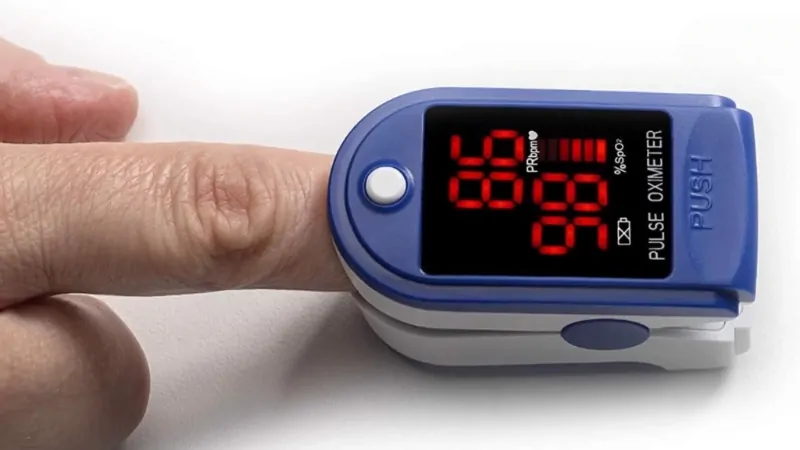
Pulse oximeters are incredibly helpful for checking blood oxygen levels, but they’re not perfect.
Several factors can lead to inaccurate readings, such as:
- Movement during the measurement
- Certain types of lighting
- Skin pigmentation
- Nail polish
- Use of intravenous dyes
- Exposure to carbon monoxide
If I suspect that a pulse oximeter reading doesn’t reflect the actual blood oxygen level, I might recommend an arterial blood gas (ABG) test.
This test involves drawing a small sample of blood from an artery, usually in the wrist or arm.
It gives a much more precise measurement of oxygen in the blood, expressed in millimeters of mercury (mm Hg).
For reference, a typical ABG oxygen reading falls between 80 and 100 mm Hg.
While the test is more invasive, it’s the gold standard for confirming oxygen levels when accuracy really matters.
The Bottom Line
Boosting your oxygen levels is easier than you might think. Small tweaks to your daily routine, like taking deep breaths, stepping outside for fresh air, and drinking plenty of water, can make a big difference in how you feel.
Keeping your lungs healthy and knowing your blood oxygen levels are also key to making sure your body gets the oxygen it needs to stay strong and thrive.
References:
-
Torp KD, Modi P, Pollard EJ, et al. Pulse Oximetry. [Updated 2023 Jul 30]. In: StatPearls [Internet]. Treasure Island (FL): StatPearls Publishing; 2025 Jan-. Available from: https://www.ncbi.nlm.nih.gov/books/NBK470348/
- Kim D, Chen Z, Zhou LF, Huang SX. Air pollutants and early origins of respiratory diseases. Chronic Dis Transl Med. 2018 Jun 7;4(2):75-94. Doi: 10.1016/j.cdtm.2018.03.003. PMID: 29988883; PMCID: PMC6033955.
-
Byber K, Radtke T, Norbäck D, Hitzke C, Imo D, Schwenkglenks M, Puhan MA, Dressel H, Mutsch M. Humidification of indoor air for preventing or reducing dryness symptoms or upper respiratory infections in educational settings and at the workplace. Cochrane Database Syst Rev. 2021 Dec 10;12(12): CD012219. Doi: 10.1002/14651858.CD012219.pub2. PMID: 34891215; PMCID: PMC8664457.
-
Watanabe K, Stöhr EJ, Akiyama K, Watanabe S, González-Alonso J. Dehydration reduces stroke volume and cardiac output during exercise because of impaired cardiac filling and venous return, not left ventricular function. Physiol Rep. 2020 Jun;8(11):e14433. Doi: 10.14814/phy2.14433. PMID: 32538549; PMCID: PMC7294577.
-
Kang KW, Jung SI, Lee do Y, Kim K, Lee NK. Effect of sitting posture on respiratory function while using a smartphone. J Phys Ther Sci. 2016 May;28(5):1496-8. doi: 10.1589/jpts 28.1496. Epub 2016 May 31. PMID: 27313358; PMCID: PMC4905897.


